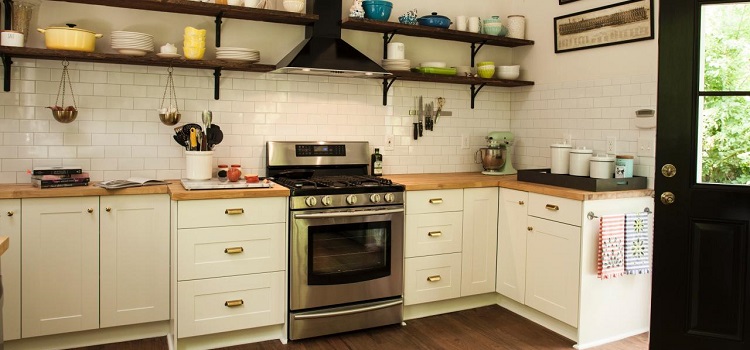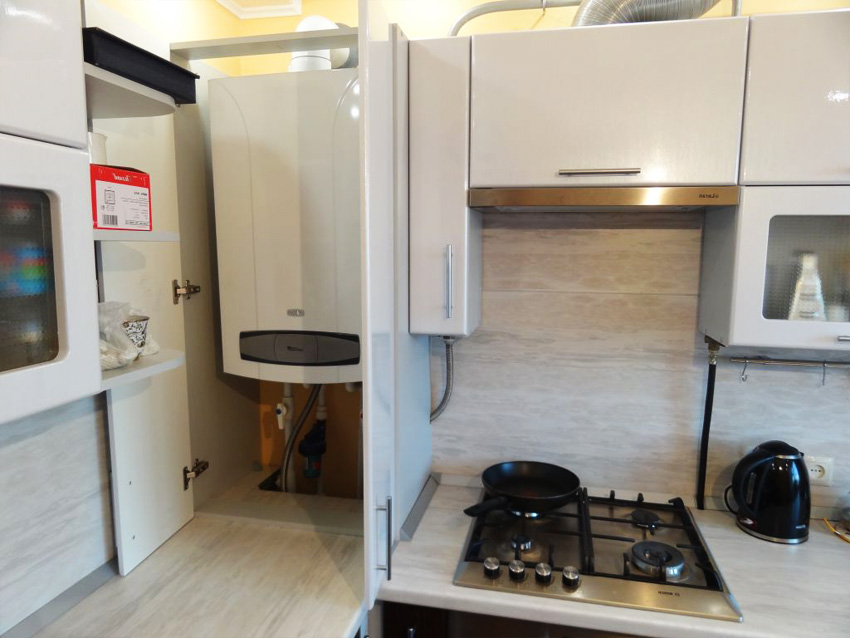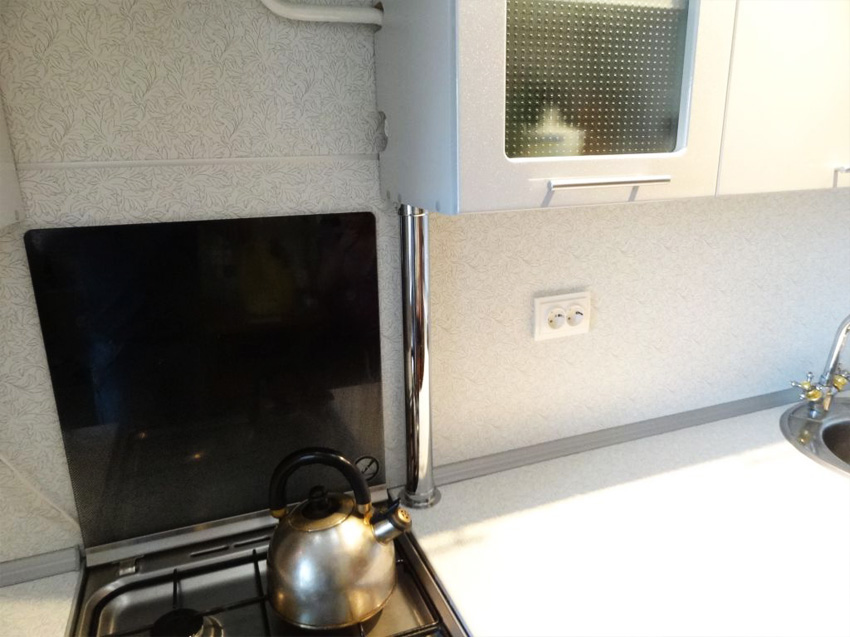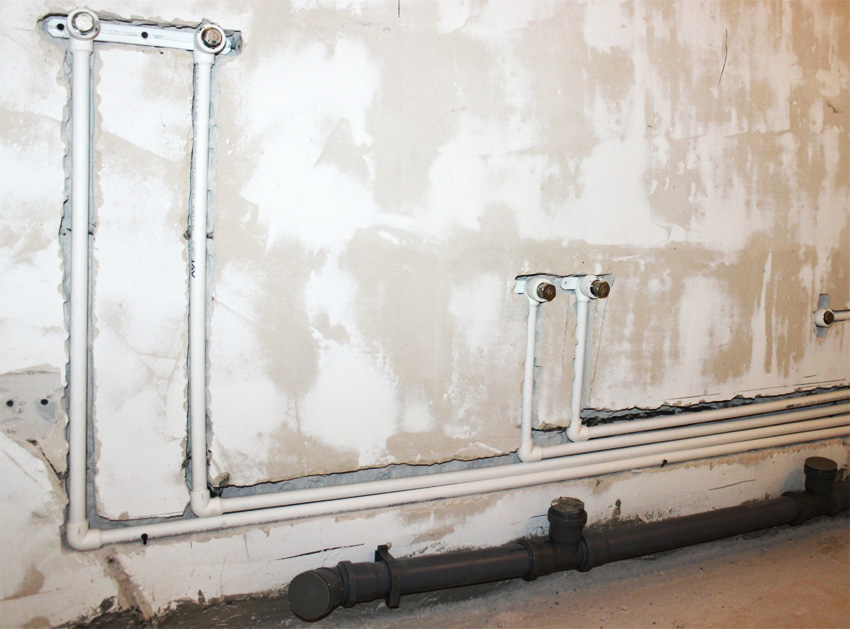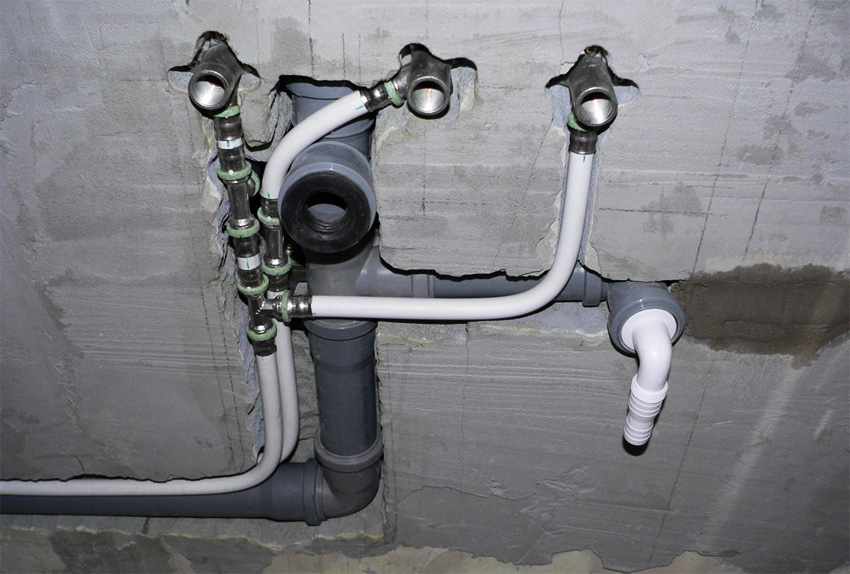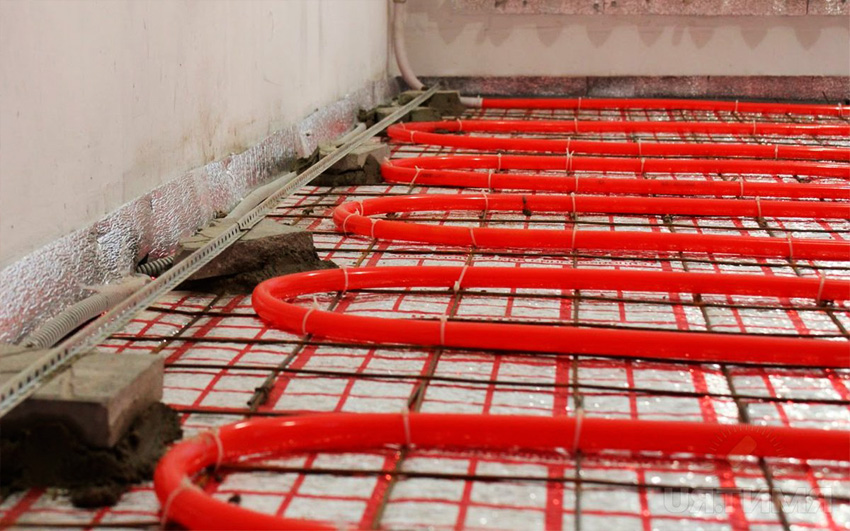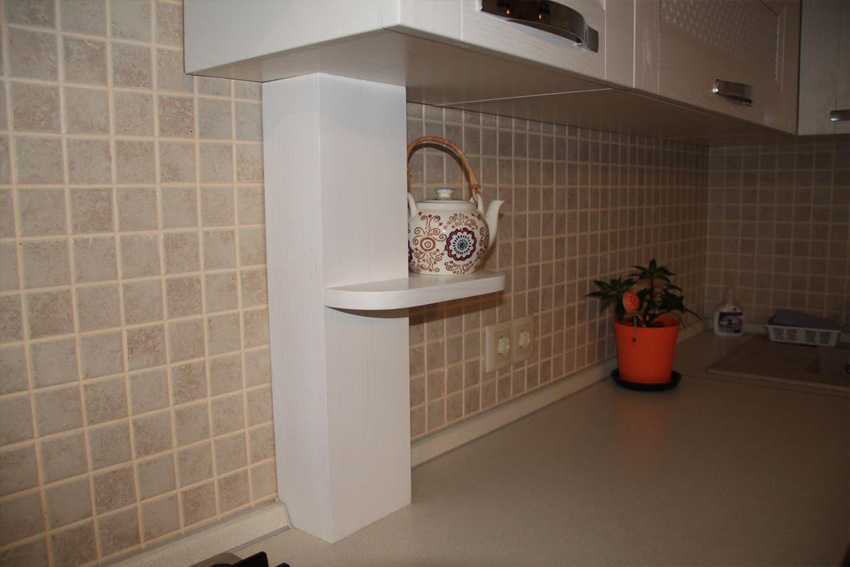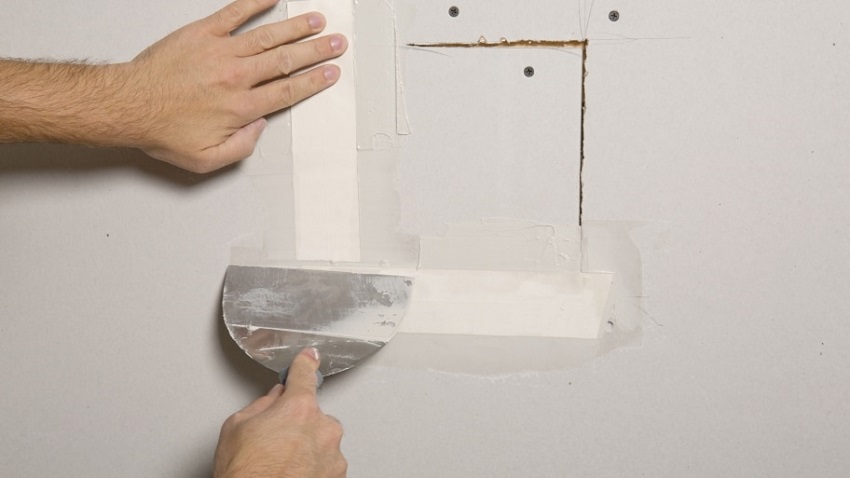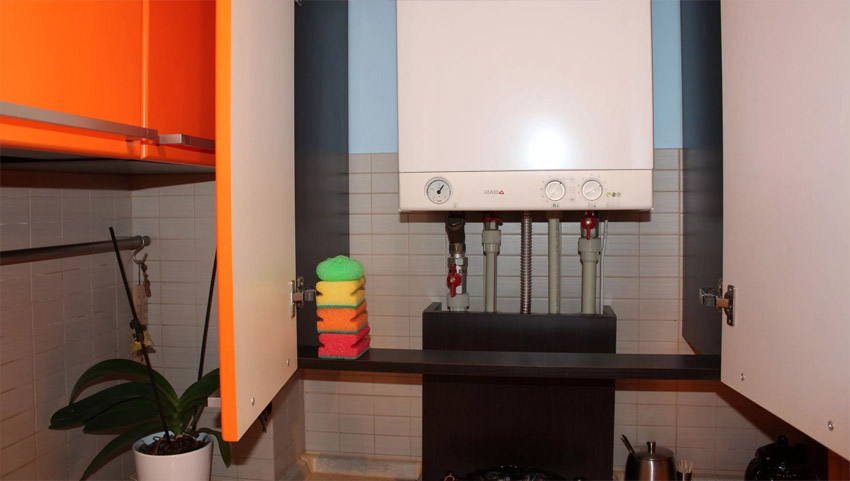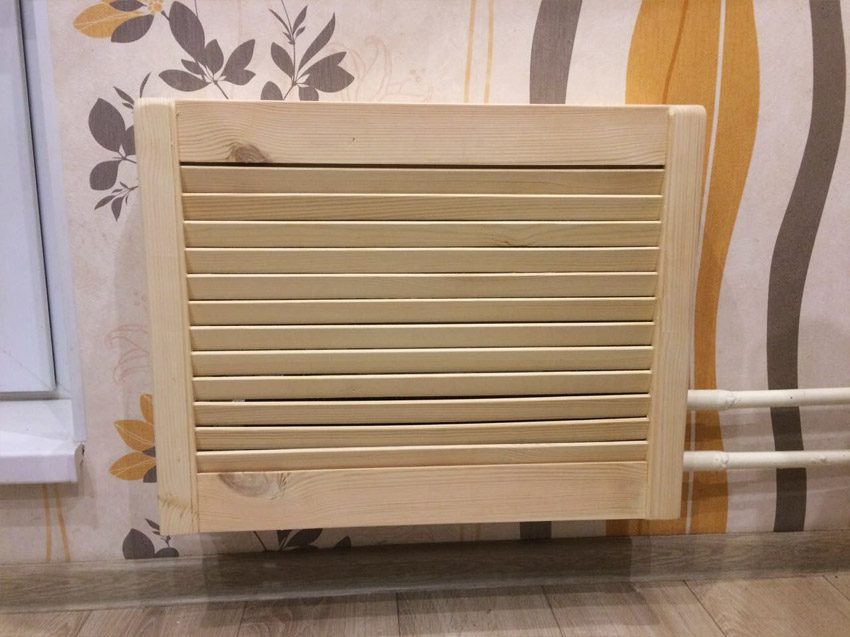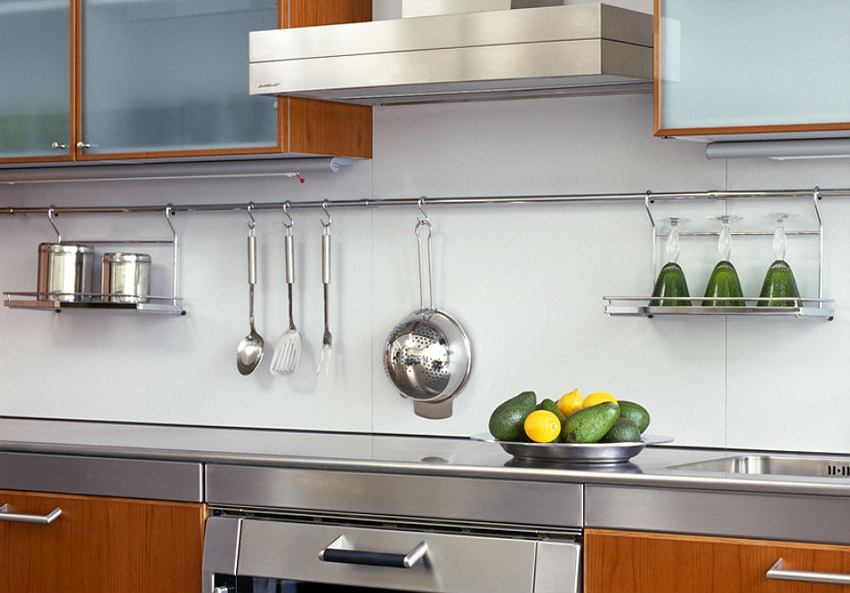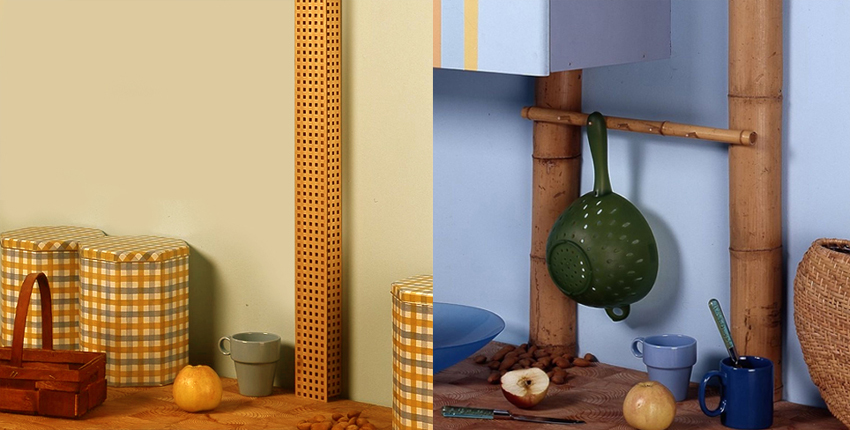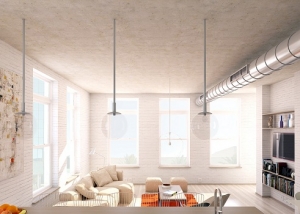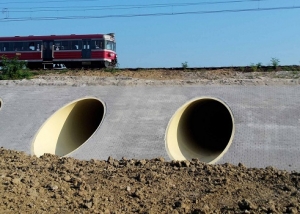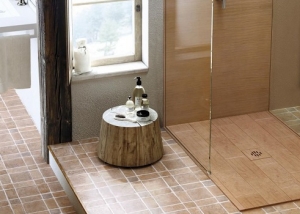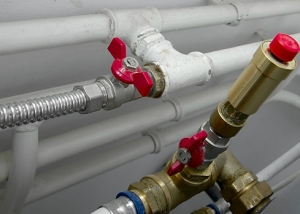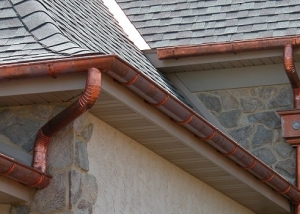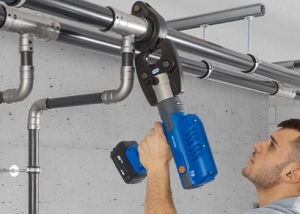Any kitchen includes several types of pipelines: heating pipes and radiators, sewer, gas, water, and ventilation pipes. There are many ways to mask these communications. Some of them are quite simple and do not require large financial and labor costs, while others are more complex. In any case, each owner can choose the appropriate method that will help disguise the various communications in the kitchen.
Content
- 1 Why mask the pipes in the kitchen?
- 2 Disguise the plumbing and heating system
- 3 How to hide pipes in the kitchen? Tips for concealed installation of water pipes
- 4 Disguising heating pipes in the floor
- 5 How to close the gas pipes in the kitchen?
- 6 How to hide a pipe in the kitchen in the corner?
- 7 Masking other pipes
- 8 Screen for battery
- 9 Reiling - a functional way to mask pipes in the kitchen
- 10 Some more simple options
Why mask the pipes in the kitchen?
The abundance of communications in the kitchen, as a rule, spoils the appearance of the room. And the kitchen is a place where not only the owners but also the guests often gather, so masking pipes in this room is a common problem. This problem can be solved using various methods. Consider the most common options for how to hide a pipe in the kitchen.
The easiest way to decorate water and sewer pipes, as there are special sleeves for this. In addition, you can use the box, placing it under the sink. Pipes located in such boxes are hidden from prying eyes, and are also always in free access for repair or modification work.
Note! Experts do not recommend laying water and sewer communications using the hidden method (in the walls). This is due to the fact that with their leakage it is much more difficult to determine the location of the breakdown, and their repair requires disassembling the wall.
Do not forget about the heating radiator, which can rightfully be considered the most noticeable part of the heating communication in the kitchen. There are a lot of options for masking and decorating batteries - from ordinary painting, to a full-fledged wooden cabinet installed end-to-end to the windowsill, resulting in a small pantry where you can store various kitchen utensils.
It is forbidden to lay gas pipes in a closed way. Therefore, their camouflage is carried out through the installation of special boxes, as well as using various decorative methods.
Disguise the plumbing and heating system
If you still decide to conduct pipes related to the plumbing and heating system using the hidden method, then it is recommended that the pipes in these pipelines be one-piece connections. This reduces the risk of an emergency.
The hidden laying of communications is carried out in special channels (strobes). This method is complex and requires large labor costs, as well as care and accuracy, therefore it is best to call a specialist who can conduct high-quality and reliable installation of pipes in the walls for concealed piping.
First of all, consider how to close the pipes in the kitchen that transport hot or cold water. Most often, hidden installation is used to mask the heating and water systems. Its essence lies in the laying of pipes in the channels of the walls (gates).
If you have the necessary equipment (punch with nozzles), then you can do the strobes with your own hands. Consider the phased installation of plumbing communication in the wall:
- First, it is necessary to dismantle the old pipeline structure.
- Further, with the help of a marker, a scheme for future wiring is applied to the walls.
- After that, it is necessary to grind the channels for the future pipeline construction. The channels must be made according to the marking, and the width and depth of the strob should take into account the width of the pipeline in thermal insulation. In addition, it is necessary to leave a small margin for cement mortar, with which the channels will be sealed.
- At this stage, the finished strobes are cleaned of dust and other small particles, after which pipes are laid in them. To fix the elements of the pipeline in the channels, special brackets or brackets are used.
- After installing the communication, it is recommended to test it. This will allow to identify possible leaks and eliminate them before closing the walls. If the pipeline functions without flaws, then you can continue to work.
- At this stage, the installation of thermal insulation material. It is convenient to use special covers as a heat insulator, which are made of different materials and are easy to install.
- At the end of the pipe in the channels are sealed with cement mortar.
Note! Sewer pipes can also be laid in gates, however, this is much more difficult due to the fact that the channels for the elements of this communication must be wider and deeper.
How to hide pipes in the kitchen? Tips for concealed installation of water pipes
There are several important rules for hidden installation of communications, which are worth paying attention to:
- only new pipes may be laid in the gates. The old pipeline is not allowed to be mounted in the walls;
- if the communication is made of plastic and is intended for heating or transporting hot water, then it is mandatory to install special compensators. Compensators are needed in order to cope with the thermal expansion of pipes. For example, polypropylene products are able to expand under the influence of high temperature up to 5 mm per 1 linear meter;
- if the communication is mounted using detachable connecting fittings, then they must be provided with free access.
Disguising heating pipes in the floor
To mask pipes related to heating communication, quite often their hidden laying in the floor is used. If the floor is made of wood, then the pipeline is laid between the bars (lags).
If it is intended to fill the concrete floor, then the pipeline structure is laid directly in the screed. Before bookmarking, it is recommended to verify the operability of the communication by checking for leaks.
A pipeline laid in the floor needs, like a water system installed in the same way, in high-quality insulation. A heat insulator is necessary so that the heat does not dissipate through the concrete screed. Without a good heat-insulating material, the floor heating system will spend a lot of energy on heating the screed.
The places where the pipeline exits the floor, as a rule, are closed with special overlays, which allows you to hide the pipes. Pads can be selected in various structures, shapes, etc.
How to close the gas pipes in the kitchen?
Many owners are interested in the same question: how to hide a gas pipe in the kitchen? Installation of such a pipe in the wall, as mentioned above, is prohibited, however, there are several ways by which you can close the gas pipe:
- using a special box;
- hold pipes inside the cabinet;
- decoration.
To date, the installation of a special box of drywall around them is considered the most popular option for masking gas pipes. In addition, it is worth noting that such boxes are also used for other communications in the kitchen: heat pipes, ventilation pipes, etc.
Consider the list of materials that will be needed for the installation of such a box:
- metal profiles;
- drywall;
- putty;
- self-adhesive mesh.
It is worth noting that, if desired, you can also make the box from other materials, but it is much easier to work with drywall. Consider the materials from which you can make a duct box:
- plywood;
- chipboard (chipboard);
- plastic.
Consider the step-by-step installation of the box:
- First of all, it is necessary to mount the frame of the box from a metal profile.
- Next, the finished frame is faced with drywall. For fixing plasterboard sheets, as a rule, self-tapping screws are used.
- At the end, the chamfers are removed from the edges of the drywall, after which it is necessary to glue the reinforcing mesh and putty it.
Important! In order to disguise the riser using a plasterboard box, you need to use racks that are joined by jumpers. Such racks will be the basis of the design. Special rails are installed on the floor and ceiling. The installation of the horizontal box is carried out in the same way, however, it has one difference — Two guides are fixed on the floor. To fix the profile to the wall using dowels.
Installation of a plastic box is carried out as in the previous case, however, there are some differences. For example, joints and external corners of a structure are closed with decorative corners of the same material.
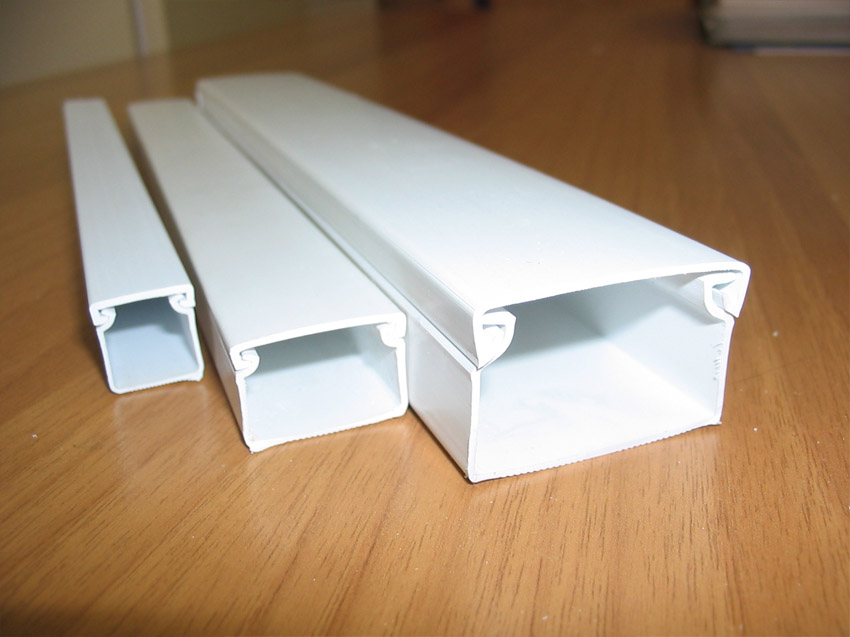
Plastic box for masking pipes in the kitchen
How to hide a pipe in the kitchen in the corner?
The gas pipe, located directly in the corner of the room, disguises itself even more simply, since only two planes must be closed to mask it. This will not only save on material, but also speed up the process itself.
Masking other pipes
Ventilation pipes coming from exhaust equipment can be hidden using various methods. The easiest way to hide pipes related to the ventilation exhaust system is to lay them on the wall above the hanging cabinets. This method is especially popular if the tubes for drawing have a rectangular cross-sectional shape. In this case, the lockers will ideally hide the communication adjacent to them and the wall.
In addition, a simple and quick option to disguise any communication is to purchase a finished bedside table without a back wall. Through this design, you can hide the water and sewer pipes. However, a significant disadvantage of this method is the high cost of new custom-made furniture.
Small cabinets or cabinets can also be done with your own hands. To do this, you need to purchase a pre-calculated amount of material. As a rule, chipboard or MDF is used to assemble such cabinets and cabinets.
From a structural point of view, it is quite simple to make such a cabinet. It consists of two side walls and a front door. This type of disguise is considered very convenient. This is due to the fact that using this method provides free access to all connecting elements of the pipeline, as well as to valves.
Screen for battery
In order to hide the heating radiator in the kitchen, special screens are very often used. The screen for the battery, if desired, can be done with your own hands, since this design is not very complicated. Such a screen will not only cover the radiator, but will also become another shelf for you.
The screen for the heating radiator is different in that it has a lattice structure. This quality allows heat to freely enter the room and heat it. Such screens are made of different materials:
- wood;
- plastic;
- metal.
Wooden screens for heating radiators have one significant drawback - the wood absorbs moisture from the room, and evaporate it due to its location near the battery. Subsequently, this leads to deformation, the appearance of cracks and swelling on a wooden surface.
Plastic constructions are not very expensive, however, when exposed to high temperatures, they emit various harmful substances that can cause harm to human health.
Metal screens are not deformed, have a fairly good resistance to mechanical stress, and also have a high heat transfer coefficient. The surface of such screens is painted with high quality powder paint. Over time, this paint does not darken, which is a very important advantage.
Reiling - a functional way to mask pipes in the kitchen
Using this method allows you to visually mask the pipe. From English, “rail” is translated as “crossbar”. This masking option does not provide for the closure of communication. In this case, the pipeline is considered as a functional element of the kitchen and is used as a crossbar masked by various kitchen accessories (towels, peppers, ladles, etc.).
It is worth noting that it is important to correctly calculate the capabilities of the pipeline - if you place too many devices on it, the design may not withstand. Experts recommend before strengthening this method to further strengthen the pipeline structure.
Let us consider in stages this non-standard variant of masking the pipeline:
- First you need to clean the pipe to a shine (if the pipe is old).
- Further, the pipeline must be painted in a color suitable for the interior of the kitchen.
- After the pipe has dried, an additional coat of varnish can be applied.
- On the resulting pipe, special hooks are installed.
- At the end, the necessary accessories are placed on the hooks.
Some more simple options
Consider a few simple options that allow you to decorate pipes in the kitchen without high financial costs:
Painting. Of course, the simplest option of all can be called pipe painting. As a rule, the color of the paint is matched to the tone of the walls, which allows you to visually mask the communication.
Note! Pipes must be painted with paint that is specifically designed for this.
Decorative painting. If you have inspiration and you draw well, then you have the scope for painting pipelines in the kitchen. To perform a pattern or ornament, you can use various color combinations.
Decorative textiles. Decorating the pipe with the help of textile materials allows you to more seamlessly fit the communication into the interior of the kitchen. Consider the most popular materials used to mask pipes in the kitchen:
- twine;
- hemp cord;
- rope.
The pipe is wrapped with decorative material, which is fixed by means of special glue. In addition, the rope itself can be decorated with any decorative elements: beads, artificial leaves, etc.
